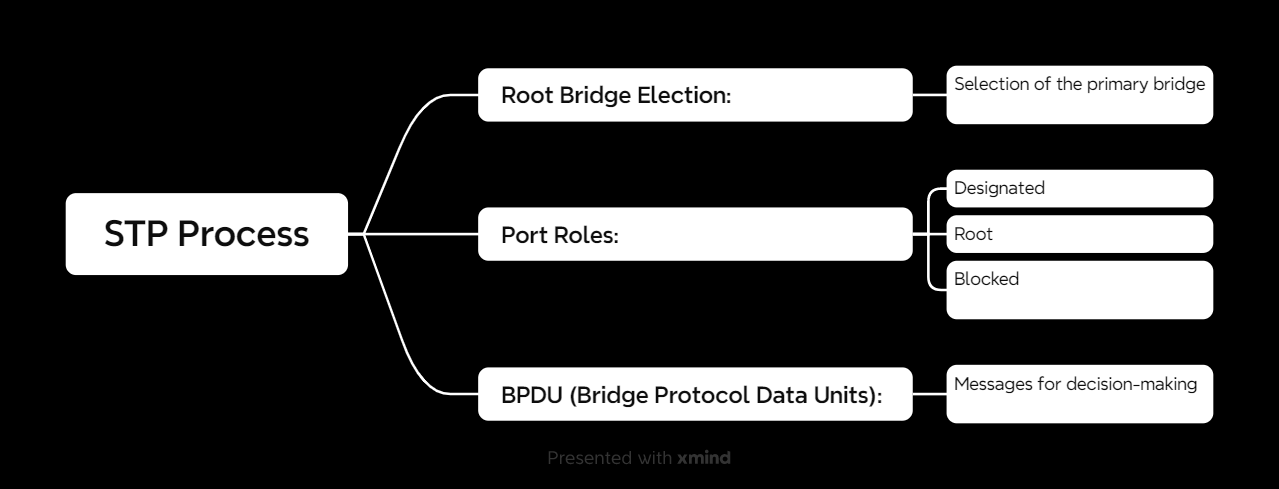If you’ve ever dealt with a network where devices keep pinging each other in a loop, you know how chaotic it can get. Enter STP, the unsung hero that makes sure your network runs like a well-oiled machine. Let’s break it down.
What Is STP?
Spanning Tree Protocol (STP) is a network protocol designed to prevent loops in a network. Loops can occur when there are multiple paths between switches, leading to broadcast storms and wasted bandwidth. STP ensures a loop-free topology by selectively disabling redundant links.
Think of STP as the traffic controller of your network—it ensures everything flows smoothly without any crashes.
How Does STP Work?
STP operates by creating a single path through your network while blocking redundant paths. Here’s how it works:
1. Root Bridge Election
- STP selects one switch to be the Root Bridge. This is like the “king” of the network. The Root Bridge becomes the central reference point for all path calculations.
2. Port Roles
- Switch ports are assigned specific roles based on their connection to the Root Bridge:
- Root Port: The path with the lowest cost to the Root Bridge.
- Designated Port: Forwarding traffic for a specific segment.
- Blocked Port: Prevents loops by not forwarding traffic.
3. BPDU (Bridge Protocol Data Units)
- Switches communicate using BPDUs to share information about paths and costs. This helps in making decisions on which ports should forward or block traffic.
Why Is STP Important?
Without STP, your network could face some serious issues. Here’s why STP is critical:
1. Prevents Loops
- Loops can create broadcast storms, overwhelming your network. STP keeps this chaos in check.
2. Provides Redundancy
- Even though STP blocks some paths, it keeps them as backups. If the active path fails, STP can activate a blocked path.
3. Improves Stability
- By ensuring there’s always a clear, loop-free path, STP stabilizes the network and avoids disruptions.
STP vs. RSTP
STP has a newer, faster cousin: Rapid Spanning Tree Protocol (RSTP). Here’s how they compare:
1. Convergence Speed
- STP can take 30–50 seconds to react to a topology change. RSTP is much faster, reducing downtime significantly.
2. Port States
- RSTP simplifies the process by reducing port states (e.g., it removes the Listening and Blocking states).
3. Use Cases
- Modern networks with higher demands often use RSTP for its speed and efficiency.
Real-World Scenarios
STP is especially useful in:
- Enterprise Networks: Ensures large-scale setups with multiple switches remain stable.
- Redundant Links: Allows backups without causing loops.
- Dynamic Environments: Adapts to changes, like adding new switches.
.png)


.png)